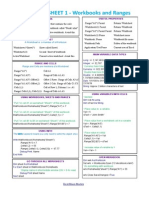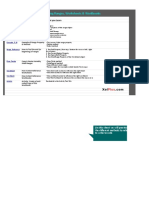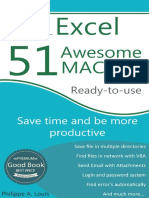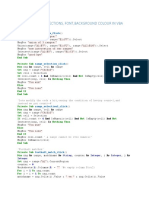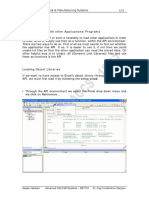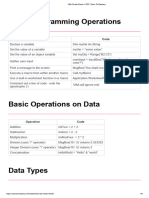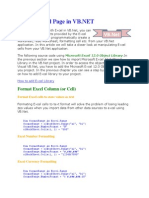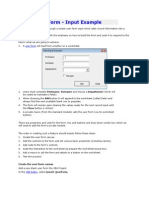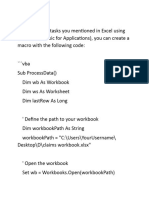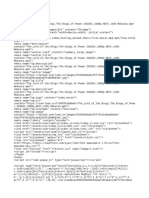0% found this document useful (0 votes)
13 views18 pagesMacro Guide
The document provides various examples of VBA code for Excel, including filling cells with values, using loops, conditional statements, and manipulating strings. It also covers exporting charts to PowerPoint, copying data between sheets, and sending emails through Outlook. Additionally, it demonstrates how to remove duplicates from an array and dynamically copy data using the CurrentRegion method.
Uploaded by
sahil mehtaCopyright
© © All Rights Reserved
We take content rights seriously. If you suspect this is your content, claim it here.
Available Formats
Download as DOCX, PDF, TXT or read online on Scribd
0% found this document useful (0 votes)
13 views18 pagesMacro Guide
The document provides various examples of VBA code for Excel, including filling cells with values, using loops, conditional statements, and manipulating strings. It also covers exporting charts to PowerPoint, copying data between sheets, and sending emails through Outlook. Additionally, it demonstrates how to remove duplicates from an array and dynamically copy data using the CurrentRegion method.
Uploaded by
sahil mehtaCopyright
© © All Rights Reserved
We take content rights seriously. If you suspect this is your content, claim it here.
Available Formats
Download as DOCX, PDF, TXT or read online on Scribd
/ 18



